Google is finally taking the Pixel a bit more seriously. While the Pixel series has long offered great features, with an emphasis on Google's tools and software, they've always felt a little safe. This year, however, Google is going all in, with its own silicon, a bold design, and more, in the Pixel 6 and Pixel 6 Pro.
The Pixel 6 Pro boasts a few design tweaks, a higher-end display, and an extra camera, compared to the standard Pixel 6. Oh, and it also comes at an extra $300, or a total of $899.
But while quite a bit more expensive, this is the flagship-quality phone that Google things Android fans should consider. Does the most Google-focused phone ever release actually compete? Or is the Pixel 6 Pro a swing and a miss?
Turns out, Google is pretty great at building phones. But the Pixel 6 Pro isn't necessarily an immediate home run.
Google Pixel 6 Pro review: Design
In some ways, the Pixel 6 Pro looks like nothing that came before it.
Let's start with the size of the phone -- it's pretty huge. It has a 6.7-inch display, and it's 6.45 inches tall, which is taller than the iPhone 13 Pro Max. If you don't like big phones, this is not the device for you.
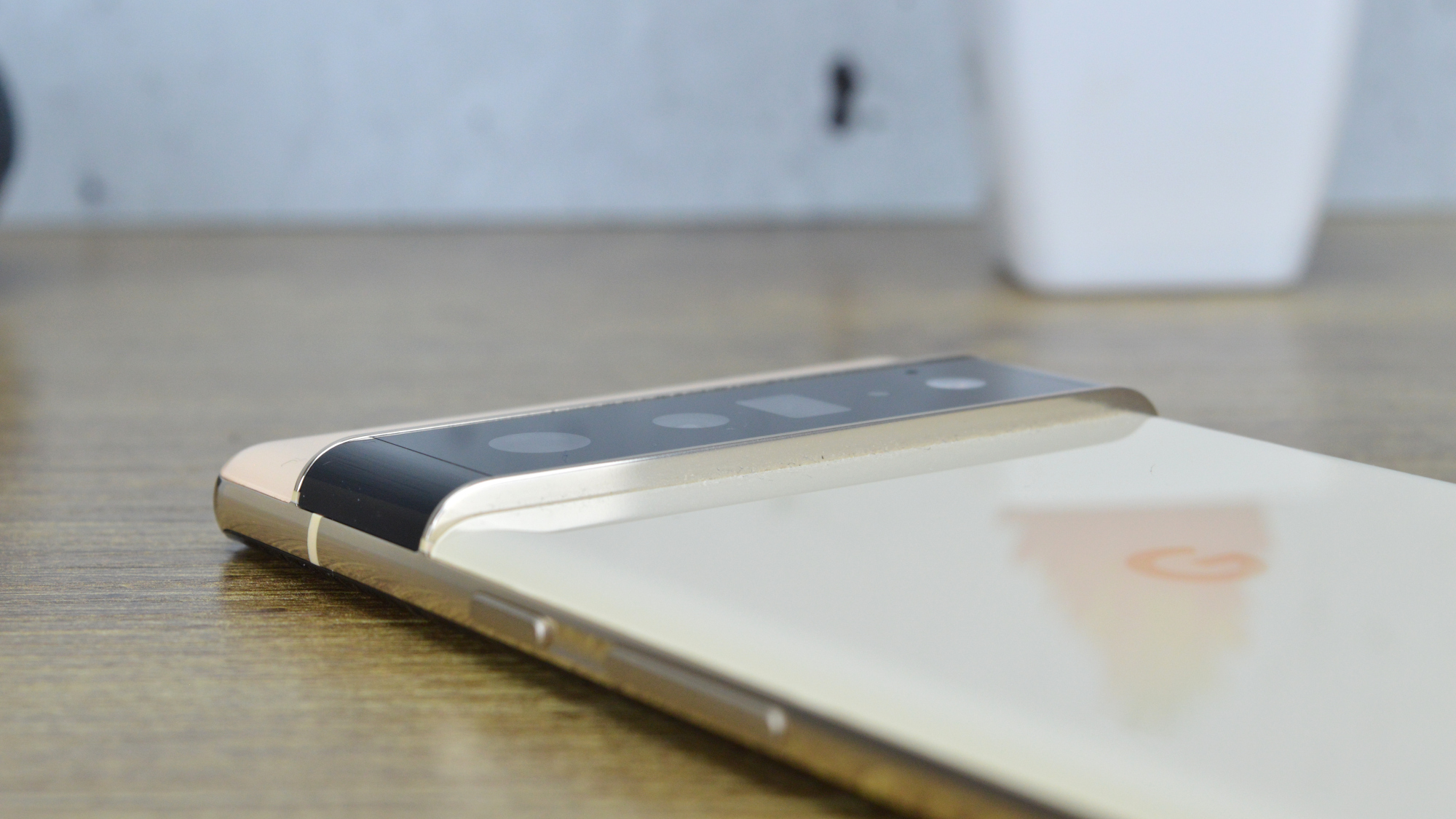
On the back of the phone, you'll get a giant camera bar, which extends across the entire back of the phone, and protrudes around 3mm from the back. It's a bit...weird. But I actually don't mind it. The camera modules on iPhones and Galaxy devices are getting bigger and bigger, and I don't mind this way of building that into the design of the phone. Like previous Pixel phones, you'll get a two-tone color scheme, with the black camera module separating the two different colors. I'm reviewing the Sorta Sunny model, which I quite like. It's also available in Stormy Black and Cloudy White.
The frame on the Pixel 6 Pro, unlike the standard Pixel 6, is a glossy stainless steel, however, it's interrupted by a glass window at the top, which if for 5G radios. I don't love the look of that window, and I wish that Google had found a different way to support the different forms of 5G on the Pixel 6 Pro. Around the edges, you'll also get a volume rocker, power button, and USB-C port.
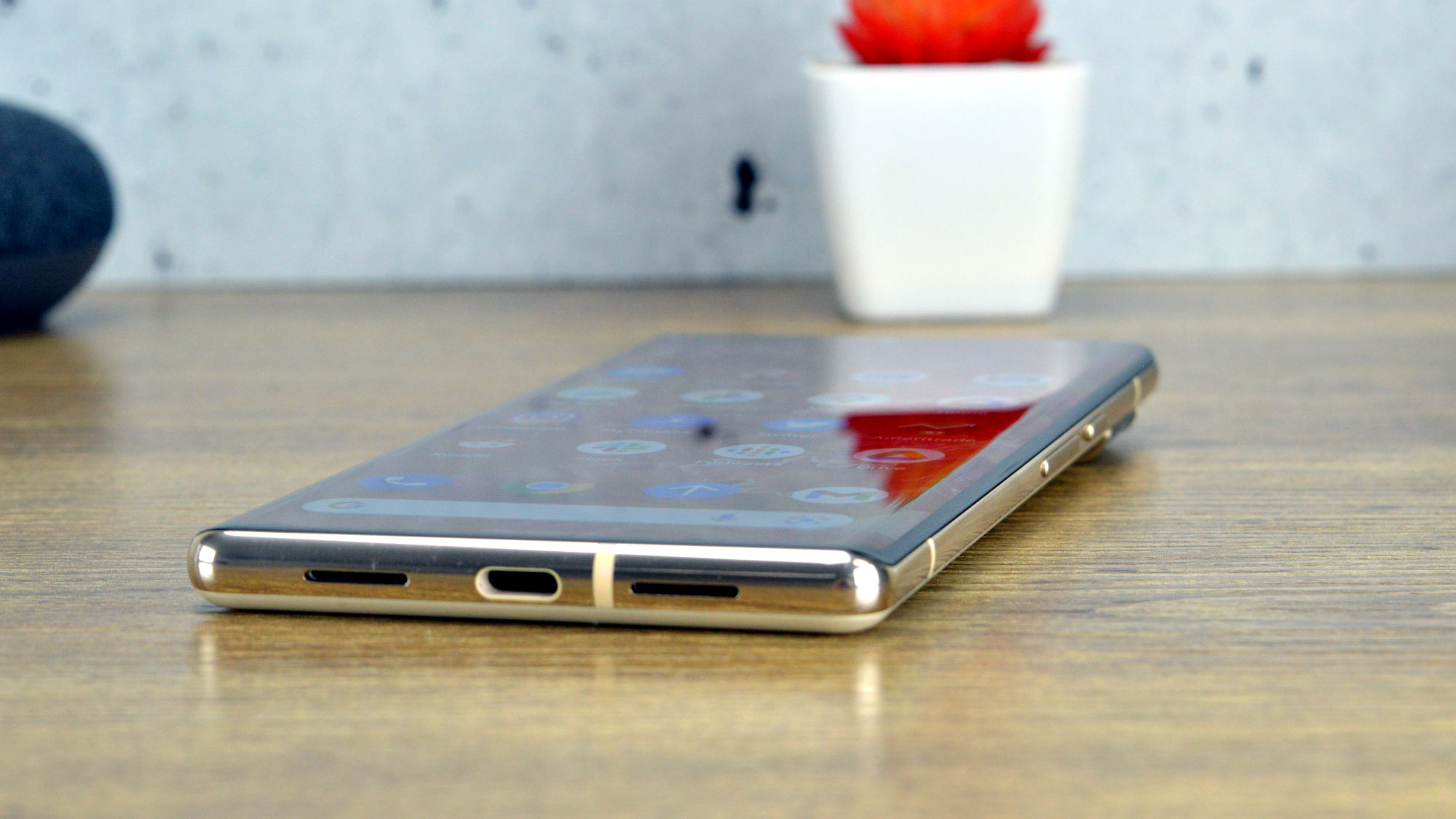
One of the ways that the device feels a little dated is the fact that it has a curved display. Some like that, others don't -- and I tend to prefer a flat display. Thankfully, I didn't experience any accidental presses on the side of the display while using the device.
Google Pixel 6 Pro review: Display
Speaking of the display, the one on the Pixel 6 Pro is pretty nice. The display measures 6.7 inches, with a 1,440p resolution and up to a 120Hz refresh rate. It's an LPTO display too, so it can scale its resolution depending on what you're doing, which can help save on battery.
Generally, I found the display to be responsive and smooth the entire time I used it. And, it got more than bright enough for use in even direct sunlight.
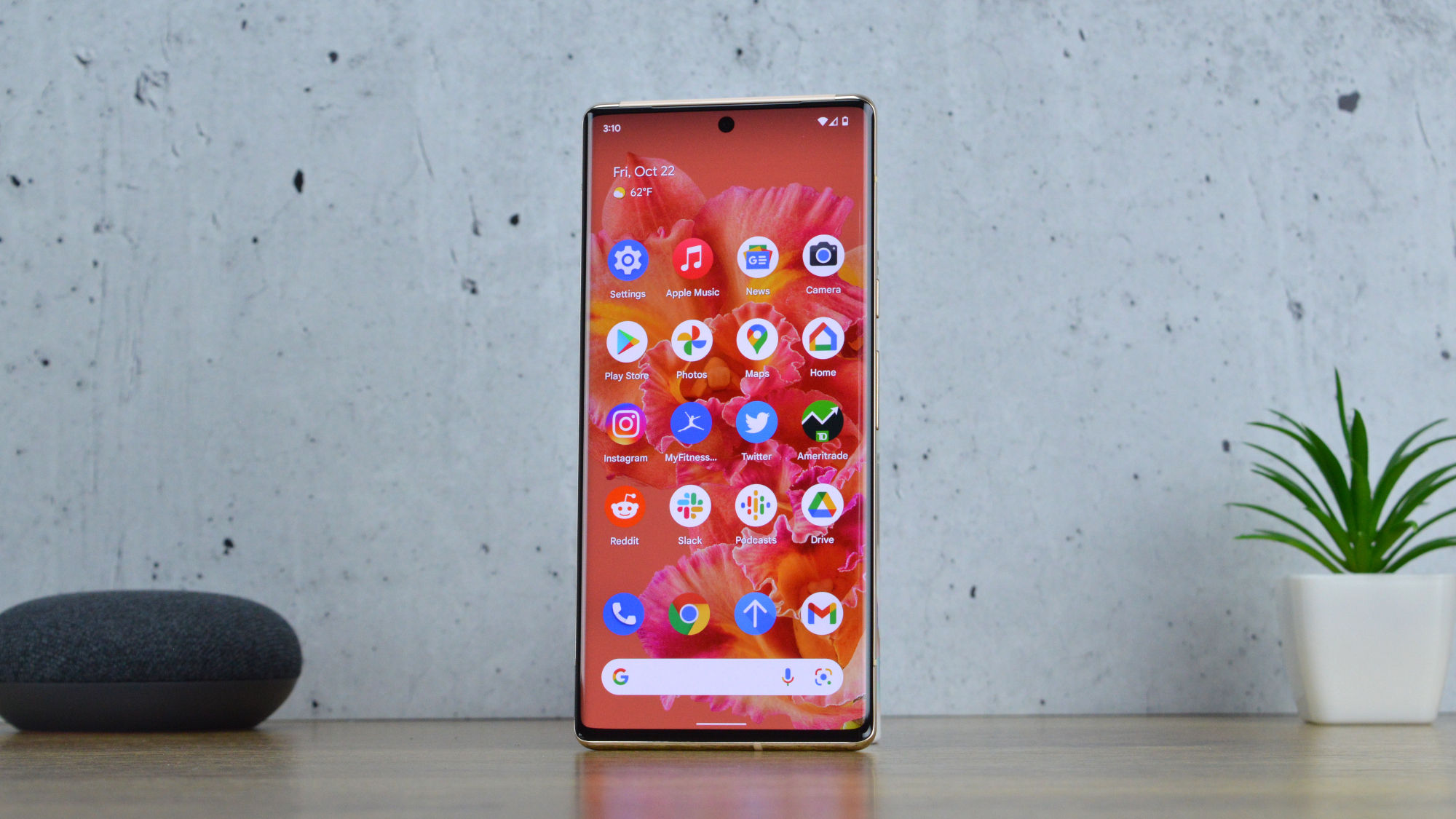
Under the display, you'll get an optical fingerprint sensor, and it's not the best. The sensor is pretty slow, and very bright -- especially in a dark room. It delivers haptics when you first touch the sensor, and again when it reads your fingerprint -- so you'll have to get used to not removing your finger from the sensor after the first vibration.
Google Pixel 6 Pro review: Performance
When Google first announced that it was developing its own silicon, many were rightfully skeptical. After all, Qualcomm has been in the chip business for decades, and it remained to be seen whether Google's Tensor chip could actually compete. Thankfully, it does. I found the Pixel 6 Pro to be more than powerful enough in day-to-day use, able to handle relatively heavy multitasking and mobile gaming.
Now, I'm not so sure the phone quite reaches the heights of the likes of the Snapdragon 888, nor Apple's A15 Bionic. But in 2021, the phone loads apps and games quickly and is able to handle relatively heavy multitasking, and ultimately, day-to-day usage is more important than benchmarks. It remains to be seen how well it will perform after a few years of use, after multiple software updates and more intense games.
Benchmark results confirmed the solid performance. The phone achieved the below results:
- GeekBench 5: 984 single-core, 2688 multi-core
- 3DMark Wild Life: 6221
These results are pretty good. As expected, they don't quite match the iPhone 13 Pro, nor the Snapdragon 888-equipped Galaxy S21. But I still feel comfortable classifying this phone as offering flagship performance.
That's good news for Google. I never really expected Google to blow everyone out of the water in performance, but the fact that it can compete on its first try is promising.
Where the Tensor is really built to compete is in machine learning performance. For example, the phone can run Google's HDR algorithm on each frame of a 4K video, or it can allow for features like the Magic Erasor or Face Unblur.
Google Pixel 6 Pro review: Battery and charging
The Pixel 6 Pro comes with a 5,000mAh battery, which is pretty huge. Thanks to the large battery size and the fact that the display can scale down its refresh rate, the battery life on the Pixel 6 Pro is good. I found that the device lasted a full day of moderate use with more than 60% left. Now, to be clear, I work at home and sit at my computer, so I use my computer way more than my phone. But even heavier users should be able to get through a full day without much issue.
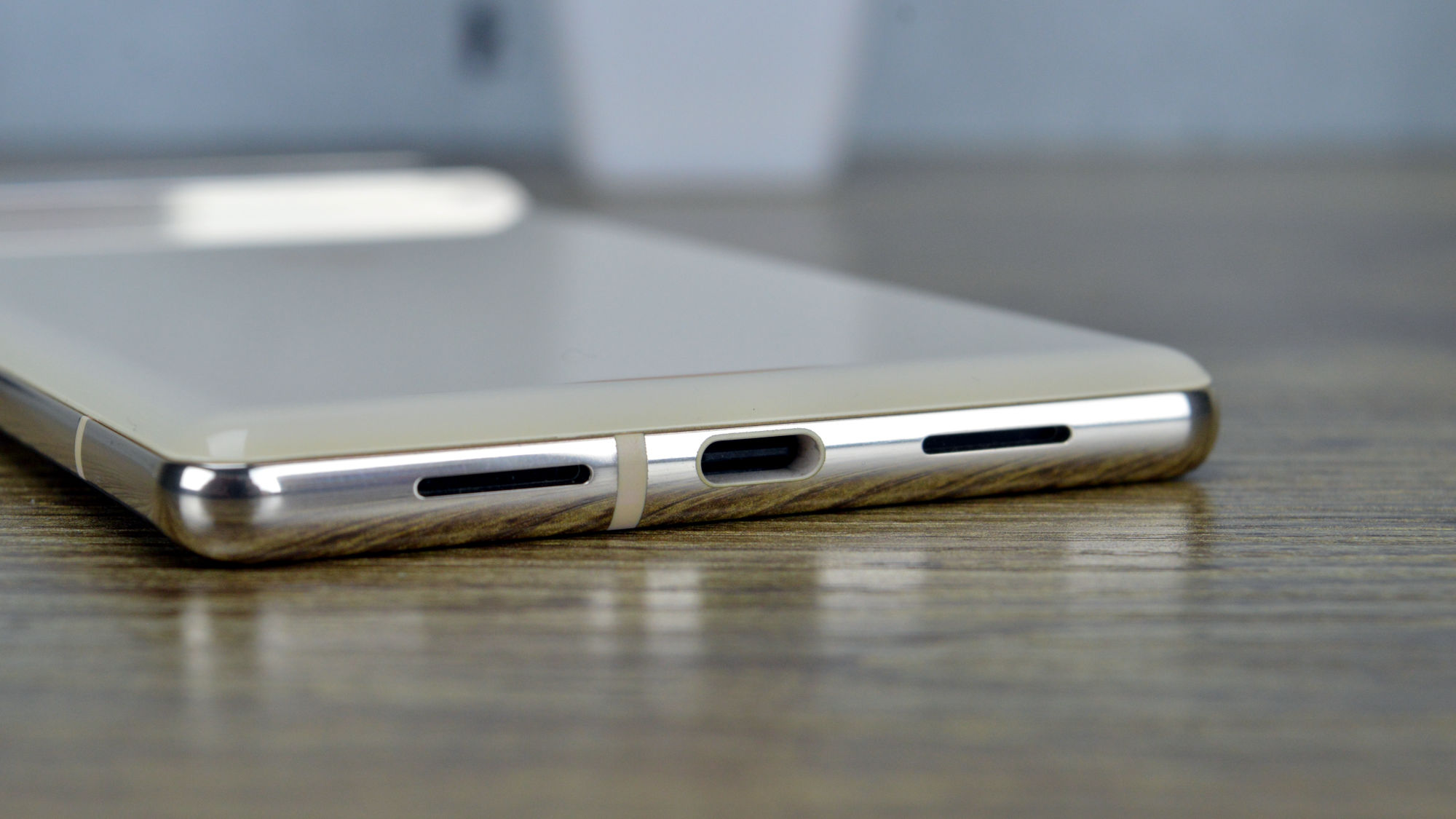
The Pixel 6 Pro supports a range of charging technologies too. You'll get Qi wireless charging, and reverse wireless charging to top up your accessories. Qi charging supports speeds of up to 23W, though you'll need to get the Pixel Stand to get it. Without the Pixel Stand, you'll be limited to 12W, which is fine, but not amazing.
The phone also supports normal fast charging, at up to 30W. Again, you'll need a compatible charger to reach those speeds.
30W isn't all that fast these days, but you should still get from 1% to 50% in around 30 minutes. That's not terrible, but I would have still liked faster charging support.
Google Pixel 6 Pro review: Camera
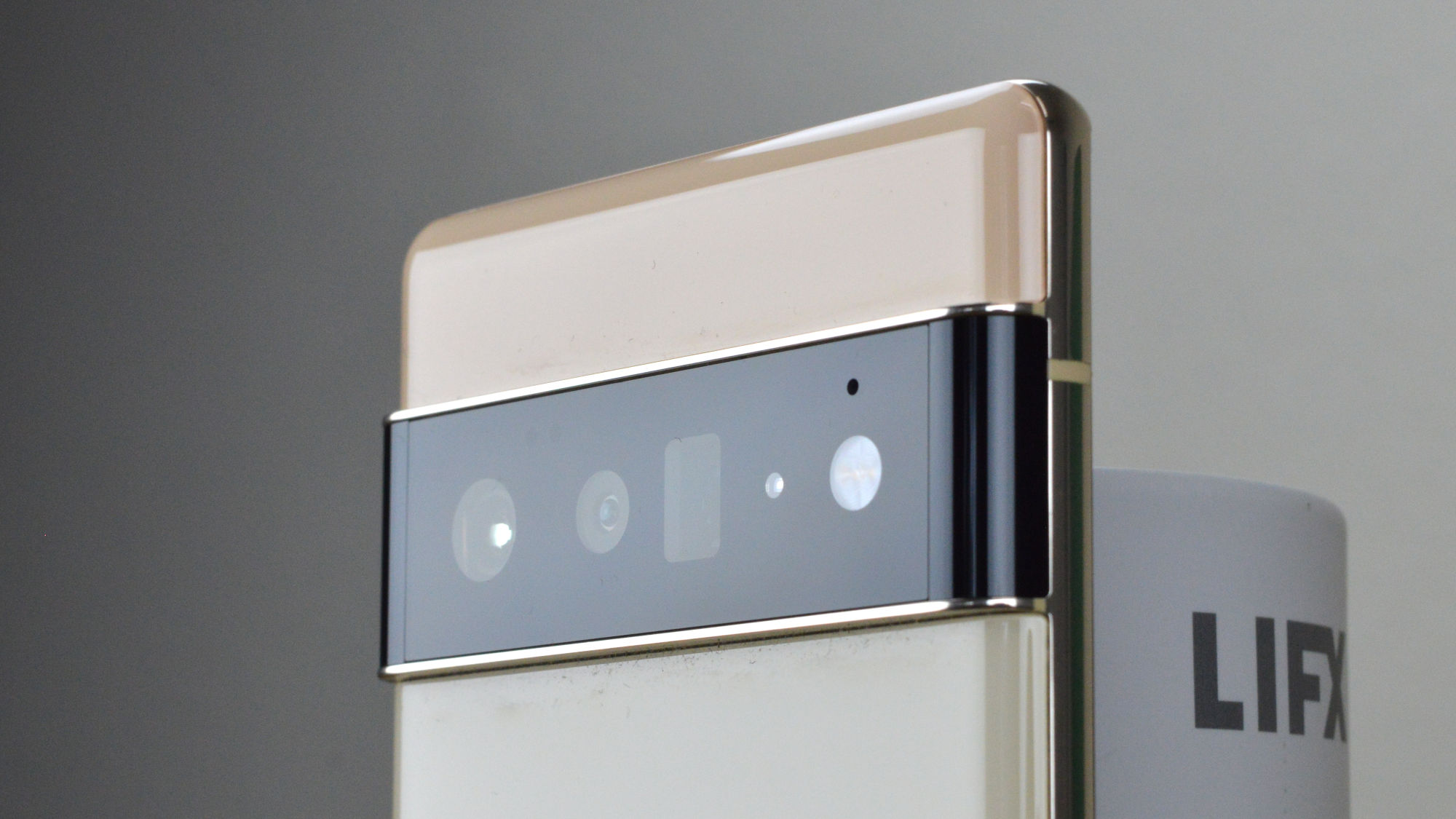
Arguably, this is the main event. The Pixel 6 Pro offers a triple camera system, unlike the dual-camera Pixel 6. The Pixel has always offered among the best cameras out there, but in recent years, Apple has caught up -- and the iPhone 13 Pro offers what I consider to be the best smartphone camera out there. Can the Pixel 6 Pro compete?
Google Pixel 6 Pro camera hardware
First, some specs. The Pixel 6 Pro comes with three cameras, the first of which is a 50-megapixel main camera, with an f/1.9 aperture. This camera uses Quad Bayer technology to bin images down to 12.5 megapixels and has a sensor size of 1/1.31”, which Google says will allow the camera to capture 150% more light than the Pixel 5.
Next up is a 12-megapixel ultrawide camera, which has an f/2.2 aperture and a 114-degree field of view. And, last is the camera that sets the Pixel 6 Pro apart from the standard Pixel 6: The 48-megapixel telephoto camera.
The telephoto camera offers 4x optical zoom, and Super Res Zoom at up to 20x, which is pretty incredible. Google's Super Res Zoom has been solid in the past, and it's nice to see it applied here. The telephoto is actually a kind of sideways periscope camera.
On the front, the Pixel 6 Pro offers an 11.1-megapixel ultrawide camera, which you can toggle between 0.7x and 1x.
Google Pixel 6 Pro camera quality
Generally speaking, the Pixel 6 Pro is able to capture excellently detailed photos, with vibrant, contrast-y colors -- exactly like you would expect from a Pixel device. The device does seem to excel at capturing detail, especially in the shadows of images, which is great to see.
In well-lit environments, of course, you'll get the best shots. Images in good lighting are vibrant and colorful, and while they're not necessarily worlds better than those taken by the Pixel 5, they're still very good.
As you start to zoom, you will lose some detail. But, thanks to the fact that the camera has a 4x telephoto camera, with Google's Super Res Zoom, zoomed images generally look great. Even at the highest 20x zoom, you can still get a decent amount of detail from a photo. I found extremely zoomed images to look quite a bit better than those on the iPhone 13 Pro, and the Pixel can zoom further, too. Zoomed images are also brighter, though they can sometimes look a little blown out.
Images captured in low light aren't bad, but I still generally prefer low-light images taken with the iPhone 13 Pro. I found low-light photos to be less consistent on the Pixel, and while they're generally brighter than the iPhone's photos, the iPhone offers more contrast, with deeper black-levels. The Pixel also tends to capture more light blooming than the iPhone. Images with any zoom on the Pixel tend to lose detail pretty quickly, though the Pixel does capture less noise, which is nice.
Google has put a ton of work into improving video capture on the Pixel, and video looks pretty good. Video stabilization is great, and there are a few different modes -- including a new locked stabilization mode, which keeps the subject in the frame even when you move a little. It works very well. The iPhone still generally captures more colorful videos, though.
Google Pixel 6 Pro camera special features
The Pixel 6 Pro comes with a number of all-new camera and editing features that Google is touting as a selling point. Perhaps the most interesting of those is the new Magic Eraser tool, which is aimed at allowing users to remove photobombers and other background objects. The concept itself is really cool. In practice, it's a bit more hit and miss.
There are times when the feature really works well, cleaning up the background for an ultimately better photo. But more often than not, the results were a little messy, showing a clearly badly edited image. Often, it removed an object decently well but left a reflection of that now-removed object. This is to be expected -- it's extremely complex to completely remove something from an image. I imagine the feature will get better over time, but until then, it's worth using for people in the background of a well-lit photo only, and even then you should still expect it to look imperfect. Of course, you can revert to your original image if it doesn't look good.
Another new feature is the Motion Mode, which is available straight from the Camera app and comes in two flavors: Action Pan and Long Exposure. Action Pan basically focuses on a subject and applies a creative blur to the background, while Long Exposure can create light trails and other effects without the need for a tripod. Both photos are labeled as being in "Beta," so it's hard to knock them. They seemed to work decently, however, you'll have to have enough awareness to take out your phone, switch modes, and select the Motion mode you want to use. That can be a tall order when the action is actually happening. Also, the blur in Action Mode was often applied to the edges of a subject, too.
Google Pixel 6 Pro review: Software
The Pixel series has always come with a scaled-back software experience, and the Pixel 6 Pro is no exception to that rule. The phone really is a showcase for Android 12, and puts features like Material You front and center. Material You basically allows you to theme the operating system based on the colors in your wallpaper. It generally works well and allows you to choose from a few different color combinations for each wallpaper.
Part of Material You is the new "Themed icons" feature, which adapts the icons to your color scheme. The feature is labeled as being in beta, so it's hard to really judge it right now -- but for now, it only works on Google's own apps. Hopefully, third-party developers will support it too.
Generally, I like Android 12, with its oversized buttons and more colorful look. Of course, it looks different on the Pixel than it will on a Samsung device, for example. But on the Pixel, it allows for more personalization and fun to Android.
Google says the Pixel 6 will get "five years of updates," however the company has confirmed that it will actually get three years of operating system updates and five years of security updates. That's pretty disappointing. Many were hoping that Google building its own chips would mean longevity on par with the iPhone, which often gets five or six years of actual operating system updates. Google really should improve on this.
Conclusions
The Google Pixel 6 Pro is a solid option from Google, but it's not necessarily a home run like the standard Pixel 6 is in its price range. The good news is that the device performs like a flagship and takes photos like a flagship. But it costs as much as a flagship too -- so most of its competition is able to match these features.
The good news is that if you want Google's take on Android and flagship specs, there's now a solid option for you. The Pixel 6 Pro has a high-end display, an excellent camera, and a Google-focused experience. But it's still worth considering the best from Samsung, and if you're open to it, Apple.
The competition
The Google Pixel 6 Pro undercuts most of the biggest competition by $100 or so, so if your budget maxes out at $900, then it's a great option. But it's really worth considering the OnePlus 9 Pro, which performs about as well, still has a pretty scaled-back software experience, and matches the display quality.
Should I buy the Google Pixel 6 Pro?
Yes. If you want a Google-centric experience and flagship specs, the Pixel 6 Pro is the way to go.
The post Google Pixel 6 Pro review: The Pixel finally goes flagship appeared first on BGR.
Today's Top Deals
- Monday’s deals: 50% off Funko Pop! toys, Lenovo laptops, $20 queen sheets, AirPods Pro, more
- 5 must-have Amazon finds you’ve probably never heard of
Trending Right Now:
- A dark new revenge thriller is taking Netflix by storm
- USDA issues urgent meat recall, so throw it away if you have any
- Let’s go, Brandon: The backstory of this Joe Biden meme that’s all over the Internet
Google Pixel 6 Pro review: The Pixel finally goes flagship originally appeared on BGR.com on Mon, 25 Oct 2021 at 12:00:04 EDT. Please see our terms for use of feeds.


0 Commentaires